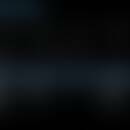Synonym(s)
DefinitionThis section has been translated automatically.
Artificial yellow azo dye which is well soluble in water, poorly soluble in ethanol, insoluble in vegetable oils.
General informationThis section has been translated automatically.
Synthetic, yellow azo dye. Euro number (E number) 102.
You might also be interested in
OccurrenceThis section has been translated automatically.
Food additive used for colouring foodstuffs (e.g. liqueurs, spirits, wines, non-alcoholic drinks, effervescent and effervescent powders, pudding powders, desserts, etc.) and medicines (sugar-coated tablets).
Note(s)This section has been translated automatically.
Due to its "pyrazolone-like" structure, it can lead to pseudoallergic reactions in people who are predisposed. However, tartrazine does not act as a cyclooxygenase inhibitor. In a larger study with proven food allergy sufferers (type I sensitisations), a urticarial reaction with Tatrazine could be induced in 1% (after administration of 0.1-10mg Tartrazine). Under provocation there was an increase in plasma and urinary histamine as well as increased prostaglandin excretion. Patients with atopic diathesis tolerate tartrazine comparable to non-atopic patients (Pestana S et al. 2010).
Asthmatic reactions after tartrazine have been described several times (Jäger L et al. 2001). Contact sensitisation has been demonstrated in a few individual cases.
Since July 20, 2010, foods containing tartrazine must bear the following statement on the label: "May impair activity and attention in children".
LiteratureThis section has been translated automatically.
- Jäger L et al (2001) Food additives. In Jäger L et al (eds.) Food allergies and intolerances. Urban&Fischer Publisher p.185-186
- Nettis E et al (2003) Suspected tartrazine-induced acute urticaria/angioedema is only rarely reproducible by oral rechallenge. Clin Exp Allergy 33:1725-1729.
- Pestana S et al (2010) Safety of ingestion of yellow tartrazine by double-blind placebo controlled challenge in 26 atopic adults. Allergol Immunopathol (Madr) 38:142-146.
- Orchard DC et al (1997) Fixed drug eruption to tartrazine. Australas J Dermatol 38:212-214.
- Corder EH et al (1995) Aspirin, salicylate, sulfite and tartrazine induced bronchoconstriction. Safe doses and case definition in epidemiological studies. J Clin Epidemiol 48:1269-1275.





